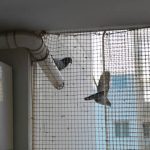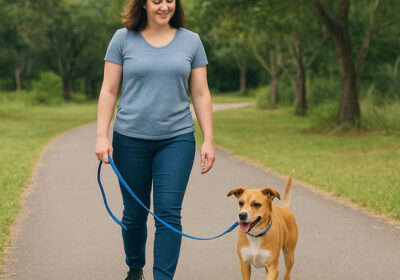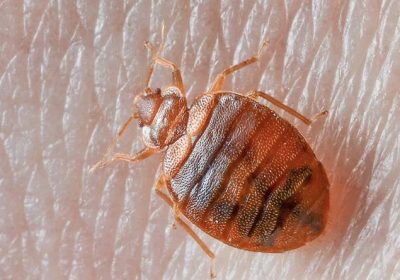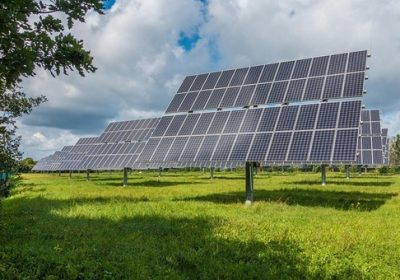Choosing the Right Bird Netting Material: A Comprehensive Guide
Birds are delightful creatures, but they can become troublesome when they invade your garden, orchard, or property. Imagine spending months nurturing your crops, only to have them pecked away by birds in a matter of days. Bird netting offers a practical solution to bird problems, but with so many materials available, how do you choose the right one? This comprehensive guide will help you make an informed decision.
Importance of Bird Netting
Bird netting is crucial for several reasons:

- Protecting Crops and Gardens: Birds can cause significant damage to fruit, vegetables, and other crops. According to a study by the U.S. Department of Agriculture, bird damage costs American farmers over $100 million annually .
- Preventing Damage to Structures: Bird droppings can corrode building materials and create unsanitary conditions. Pigeons, for example, are known to cause extensive damage to roofs and ventilation systems.
- Ensuring Safety and Hygiene in Residential and Commercial Areas: Birds can carry diseases that pose health risks to humans. Proper netting helps maintain cleanliness and safety in areas frequented by people.
Types of Bird Netting Materials
Choosing the right material depends on your specific needs. Here’s a look at the most common options:
Nylon Bird Netting
Nylon bird netting is made from synthetic polymer fibers known for their strength and flexibility. It’s lightweight and often treated to resist UV rays.
Pros and Cons
Pros:
- Durable and long-lasting
- Resistant to weather and UV rays
- Flexible and easy to handle
Cons:
- Can be more expensive than other materials
- May degrade over time if not properly treated
Common Applications
Nylon netting is commonly used in agricultural settings to protect fruit trees, vineyards, and vegetable gardens. It’s also effective for bird-proofing buildings and structures.
Polyethylene (PE) Bird Netting
Polyethylene bird netting is made from high-density plastic fibers. It’s lightweight, resistant to UV rays, and comes in various mesh sizes.
Pros and Cons
Pros:
- Highly durable and resistant to harsh weather
- UV-stabilized to prevent degradation
- Cost-effective
Cons:
- Less flexible compared to nylon
- Can become brittle over time in extreme conditions
Common Applications
PE netting is widely used in both residential and commercial applications, such as protecting gardens, crops, and buildings.
Polypropylene (PP) Bird Netting
Polypropylene bird netting is another plastic option, known for its strength and lightweight properties. It’s often treated to resist UV damage.
2. Pros and Cons
Pros:
- Strong and lightweight
- Resistant to chemicals and moisture
- UV-stabilized for long-term use
Cons:
- Can be less flexible than nylon
- May require more maintenance in high-stress environments
Common Applications
PP netting is ideal for agricultural uses, such as protecting orchards and vineyards, as well as for bird-proofing structures.
Stainless Steel Bird Netting
Stainless steel bird netting is made from high-grade steel wires, offering unparalleled strength and durability. It’s resistant to corrosion and harsh weather conditions.
Pros and Cons
Pros:
- Extremely durable and long-lasting
- Resistant to corrosion and rust
- Effective against all bird species
Cons:
- More expensive than plastic options
- Heavier and more difficult to install
Common Applications
Stainless steel netting is used in high-risk areas where durability is paramount, such as airports, industrial facilities, and large commercial buildings.
UV-Stabilized Bird Netting
UV-stabilized bird netting is treated to resist damage from ultraviolet rays, extending its lifespan in outdoor conditions.
Pros and Cons
Pros:
- Extended durability in sunny environments
- Prevents degradation and brittleness
- Available in various materials (nylon, PE, PP)
Cons:
- May be more expensive due to UV treatment
- Still requires regular maintenance
Common Applications
UV-stabilized netting is ideal for outdoor agricultural use, gardens, and buildings exposed to direct sunlight.
Factors to Consider When Choosing Bird Netting Material
Selecting the right bird netting material involves considering several factors:
Durability
Weather Resistance
Your netting needs to withstand local weather conditions, whether it’s extreme heat, cold, or precipitation. Nylon and polyethylene are known for their excellent weather resistance.
UV Resistance
UV-resistant materials like UV-stabilized nylon and polyethylene are essential for preventing degradation from sunlight.
Longevity
Consider how long you need the netting to last. Stainless steel, for example, offers the longest lifespan but comes at a higher cost.
Mesh Size
Types of Birds to Be Deterred
The size of the mesh determines which birds can be kept out. Smaller mesh sizes are needed for smaller birds like sparrows, while larger mesh can deter pigeons and larger species.
Specific Application Needs
The mesh size should be chosen based on the specific needs of your application, ensuring it effectively prevents bird entry without being overly restrictive.
Installation Requirements
Ease of Installation
Some materials are easier to install than others. Lightweight options like polyethylene are generally easier to handle than heavier materials like stainless steel.
Tools and Accessories Needed
Consider the tools and accessories required for installation. Some materials may need special tools or more complex installation processes.
Environmental Impact
Eco-Friendliness of Materials
Opt for materials that are environmentally friendly. Polypropylene and polyethylene can be recycled, whereas stainless steel has a minimal environmental footprint over its long lifespan.
Recyclability and Biodegradability
Consider whether the material can be recycled or if it’s biodegradable. This is particularly important for minimizing environmental impact after the netting’s useful life.
Cost
Budget Considerations
Your budget will play a significant role in your choice. Nylon and polyethylene are generally more affordable than stainless steel.
Long-Term Cost-Effectiveness
Consider the long-term cost-effectiveness. While stainless steel may have a higher upfront cost, its durability could make it more economical over time.
Applications of Bird Netting
Bird netting can be used in various settings to address specific needs:
Agricultural Uses
Protecting Fruit and Vegetable Crops
Bird netting is essential for protecting crops from birds, which can devastate fruit and vegetable harvests.
Vineyard Protection
Netting helps protect grape crops from birds, ensuring a successful harvest and higher quality wine production.
Livestock Safety
Netting can be used to protect livestock from birds that may spread diseases or compete for feed.
Residential Uses
Home Gardens
Gardeners can use bird netting to protect plants, fruits, and vegetables from birds, ensuring a bountiful harvest.
Bird-Proofing Structures (e.g., Roofs, Balconies)
Homeowners can use netting to prevent birds from nesting on roofs and balconies, reducing damage and mess.
Commercial and Industrial Uses
Warehouses and Factories
Bird netting helps keep birds out of warehouses and factories, preventing contamination and damage to goods.
Public Buildings and Spaces
Public buildings and spaces can use netting to maintain cleanliness and safety, ensuring a pleasant environment for visitors.
Airports and Hangars
Airports and hangars use bird netting to prevent birds from interfering with aircraft operations, enhancing safety and efficiency.
Installation and Maintenance Tips
Proper installation and maintenance are key to the effectiveness of bird netting:
Proper Installation Techniques
Tools and Materials Required
Gather all necessary tools and materials before starting the installation. This may include nets, clips, hooks, and support poles.
Step-by-Step Guide
- Measure the Area: Determine the size of the area to be covered.
- Cut the Netting: Cut the netting to the required size, allowing some extra for securing edges.
- Install Supports: Set up support structures such as poles or frames.
- Attach the Netting: Secure the netting to the supports using clips or hooks.
- Ensure Tension: Make sure the netting is taut to prevent sagging.
Maintenance Practices
Regular Inspections
Regularly inspect the netting for any signs of wear or damage. Early detection can prevent bigger issues.
Cleaning Methods
Keep the netting clean by removing debris and bird droppings. This can be done using water and mild soap.
Repairing Damaged Sections
Repair any tears or holes immediately to maintain the effectiveness of the netting. Use patches or additional netting material for repairs.
Safety and Legal Considerations
Ensuring safety and compliance with legal regulations is crucial:
Safety Measures
Preventing Harm to Birds
Choose netting that is safe for birds, avoiding materials that could injure them. Ensure proper installation to prevent entrapment.
Ensuring Human Safety During Installation
Follow safety guidelines during installation to prevent accidents. Use proper tools and wear protective gear.
Legal Regulations
Local Wildlife Protection Laws
Check local wildlife protection laws to ensure compliance. Some regions have specific regulations regarding bird netting.
Compliance with Building Codes
Ensure that the installation of bird netting complies with local building codes and regulations.
Conclusion
Recap of Key Points
Selecting the right bird netting material is crucial for protecting crops, gardens, and structures. Consider factors such as durability, mesh size, installation requirements, environmental impact, and cost.
Encouragement to Take Informed Action
Assess your individual needs and choose the material that best fits your requirements. If needed, seek expert advice to ensure the best outcome.
Final Thoughts
Effective bird netting provides long-term benefits, protecting your investment and maintaining a safe, clean environment. By choosing the right material and following proper installation and maintenance practices, you can ensure optimal protection.
FAQs
Q: What is the best material for bird netting? A: The best material depends on your specific needs. Nylon and polyethylene are popular for their durability and affordability, while stainless steel offers the highest durability.
Q: How do I choose the right mesh size for bird netting? A: The mesh size should be chosen based on the type of birds you want to deter. Smaller birds require smaller mesh sizes, while larger birds can be deterred with larger mesh.
Q: Is bird netting safe for birds? A: Yes, if installed correctly. Ensure the netting is taut and free of gaps to prevent birds from getting entangled.
Q: How long does bird netting last? A: The lifespan of bird netting depends on the material. Nylon and polyethylene netting can last several years, while stainless steel can last much longer.
Q: Can bird netting be recycled? A: Polyethylene and polypropylene netting can be recycled, while stainless steel has a minimal environmental footprint due to its long lifespan.
Q: How often should I inspect and maintain bird netting? A: Regular inspections, at least twice a year, are recommended. Maintenance includes cleaning and repairing any damaged sections promptly.
Q: Are there legal regulations for using bird netting? A: Yes, regulations vary by location. Check local wildlife protection laws and building codes to ensure compliance.
By carefully considering these factors and following best practices, you can effectively protect your property with the right bird netting material.
Read more about Bird Netting
- Choosing the Right Bird Netting: A Comprehensive Guide
- Installation Techniques for Bird Netting: Step-by-Step Instructions
- The Environmental Impact of Bird Netting: Balancing Wildlife Protection and Human Needs
- Top Benefits of Using Bird Netting in Agriculture and Horticulture
- Common Mistakes to Avoid When Installing Bird Netting
- Innovative Bird Netting Solutions for Urban Areas
- The Legal Aspects of Bird Netting: Regulations and Best Practices
- Maintenance and Longevity of Bird Netting: Keeping Your Netting Effective
- Comparing Bird Netting with Other Bird Control Methods: Pros and Cons









